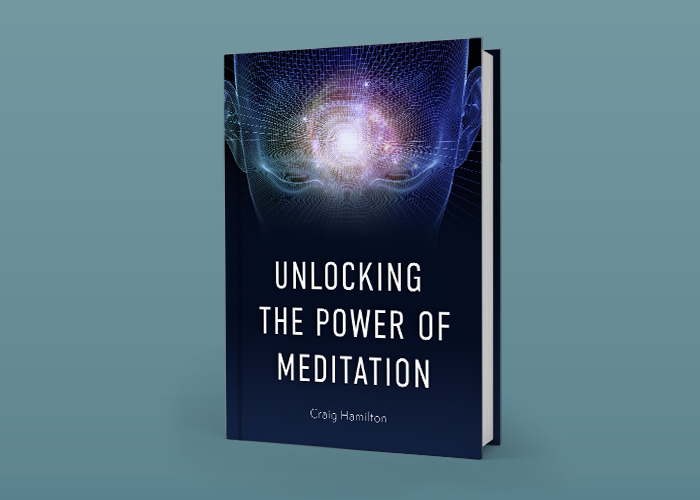We all know it’s important to have goals. They keep us focused and push us to grow beyond our limitations. But when it comes to meditation, while we might be doing the practice with a goal in mind, fixating on a specific outcome or state that we’re trying to get to can be a big distraction. There’s a kind of paradox when it comes to spiritual practice where in order to “achieve” the goal, we have to first abandon it. In this 10 minute talk, Craig explores the goalless goal of meditation and how to hold the right mindset while doing the practice.
Below the audio is an edited transcript of the talk and a downloadable MP3, if you’d prefer to engage the content in that way.
Want to download the mp3 version? Click here.
Transcript
Question:
When I’m practicing meditation, how do I know if I’m doing it right? How will I know when I’ve reached the place you’re pointing to?
Answer:
When it comes to meditation, you can pretty much set aside questions like, “How do I know if I’m there yet?” or “How do I know when I’m doing it right?” Most of the time, these questions just aren’t that helpful when you’re meditating.
I know this can be challenging. You’re sitting there, trying to follow a particular technique, and there’s a natural desire to know if you’re doing it right or if it’s working. You want to know if you’re wasting your time or just spinning your wheels.
This is the paradox of spiritual practice. Any fixation on a specific goal, whether it’s trying to have a certain experience or attain a certain state of consciousness or hold your attention in a certain place, is going to be an obstacle to true meditation. As long as we’re attached to any outcome, we’re going to fall short of the goalless goal of the practice, which transcends anything we can fixate on. It’s beyond anything your mind will be able to grasp, or hold on to, or even know. I’m trying to point us beyond being fixated on any kind of goal. Don’t worry about whether you’re doing it right or not. There’s no need to worry about how you will know when you’re there.
The point of any meditation or awareness practice is simply to keep exploring it. It’s an exploration of awareness. It’s an exploration of consciousness. We’re working to remove our fixation on all of the objects in consciousness. This includes our thoughts, feelings, sensations and ultimately the entire world. This is where our attention normally always goes, and so we’re working to unglue awareness from all of the objects that arise within it. Let’s unglue our awareness from identifying with any attachment to the things that are going through our minds—the feelings that we’re feeling, the sensations swirling in our psyches. Let’s free ourselves from all of that so we can discover the spacious expanse that we really are. When we free ourselves from this attachment, we can discover the infinite depths that we are, because our attention is not just focused on the little things happening on the surface. It’s now free to discover depth.
So that’s the point of this practice. It’s something that we’re just exploring with no specific goal in mind. There isn’t a “there” to get to like there is with most goals you’re trying to achieve in life. There’s never a sense of “Okay, good. I’ve got it. Let me just hold my attention right there.” Of course it can feel a little bit like that sometimes. We can certainly have experiences where it feels like we’ve reached a peak experience or spiritual goal. But it’s not fundamentally what the practice is all about. And it’s not where you should have your primary attention when you’re practicing.
That said, I want to make a distinction. As we begin to actually awaken to the subtle dimensions of who and what we are, we can become aware of a deeper consciousness that seems extremely delicate to sustain. The traditional metaphor for this dynamic is that we’re navigating a very thin razor’s edge. For instance, when you become aware of awareness, you might realize that it’s the first time in your life that you’ve not been focused on an object. You realize, “Oh, wow. I’m focused on the subject. I’m focused on the experiencer, and it feels very new and different.” When this happens, you realize that what you’re experiencing is an incredibly delicate awareness. You realize that in a split second, you could fixation this experience, turning it into an object that you can hold on to. And then your mind can get back involved.
And then you realize just how subtle it is to not be involved in the mind, and to just sit there being aware of awareness without fixating on any object. You discover that your consciousness can’t even move a millimeter. If you move even the slightest bit in any direction, you’re creating an object. You’re fixating on it and you’re back in the mind. So, it’s like walking a tightrope.
When you start to discover this very delicate razor’s edge of inner freedom, then you can begin to engage in a subtle kind of steering. You’re aware of what’s happening, and you’re ever so slightly steering your practice to stay on that tightrope. Doing a little bit of steering in these moments is totally valuable and important. There is a time and a place for steering your meditation. Once something’s been revealed, you can subtly hold that delicate consciousness without falling back into the identification and fixation of the mind.
But while there’s a place for that subtle steering, the reason I don’t emphasize it is that it only applies after something has already been realized and discovered. And at that point, this dynamic is self-apparent. I’m sure many of you can relate to this: at some point in meditation, some profound and subtle consciousness opens up, and in that moment, you know exactly what you have to do to stay with it. It’s very subtle, and it feels very delicate. You almost feel like you can’t breathe or you might lose it. It’s like a little candle flame has started to burn, and you don’t want to blow it out. My point is that it’s self-revealing, and what you need to do to maintain it is self-apparent. Any steering you need to do to stay on the razor’s edge reveals itself to you naturally, as a product of awakening in that moment.
That’s a very different orientation from sitting down to try to pay attention to awareness and then constantly asking, “Is this it? Is that it? Am I there yet? How do I know if I’m doing it right?” In that situation, the mind is very involved in measuring, weighing, evaluating, and trying to determine and control. That’s really our tendency. That’s how we live most of our lives. We’re always trying to predict outcomes and move toward objectives. We’re consciously trying to avoid obstacles and stay in control.
So because that’s our normal tendency, when we sit down to meditate, it’s better just to drop all of it altogether. We should just leave all that aside and come to the practice with a beginner’s mind—with a kind of open innocence. We just give ourselves to the practice as it’s described to us. We work with it and just keep trying to do it, no matter what. Our mode should really be more of an innocent exploration of consciousness.
A big part of the practice is not knowing whether any particular experience of awareness is it. The moment you’re saying, “Ah, this is awareness”, it’s probably not. It might have been for a second, but now it’s something you’re thinking about, holding in your mind, looking at, and it’s an object again. So, this practice requires us to really free ourselves from a tightness and narrowness of focus, and into a kind of spacious, open, fluid, free consciousness that is exploring itself.
Of course, you might suddenly find during your practice that you’re experiencing a different kind of non-local consciousness, but you don’t want to grab on to it. Try to avoid thinking “Oh, this is it, I got it.” It’ll be gone in a second. So when the question pops up, “Is this it? Is this what we’re aiming for?”, just don’t answer it. Don’t get involved. Tell yourself, “I don’t know. I don’t need to know.” You really don’t need to know. That’s the whole point. You don’t need to know whether you’re doing it exactly right or not. Isn’t that freeing? I encourage you to just try this approach and see what it brings. Different practices will bring different things on different days. The key is to just keep the exploration going so it deepens and deepens.















Thank you. I appreciaed what you said and have shared it as you suggest on FaceBook.
David
This explanation makes total sense to me. Thank you very much.